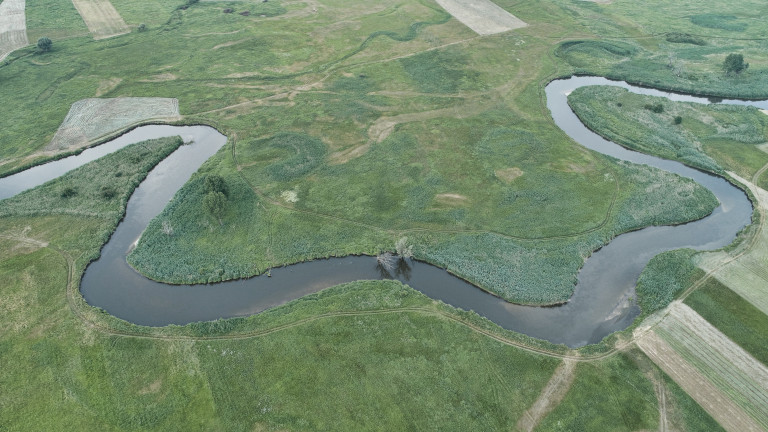
A Bird’s Eye View of the Świętokrzyskie Voivodship
The unforgettable Nida valley and traces of history
(The Pińczów region)
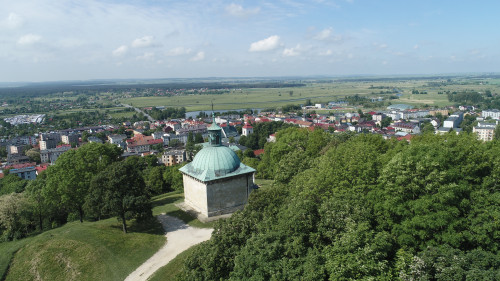
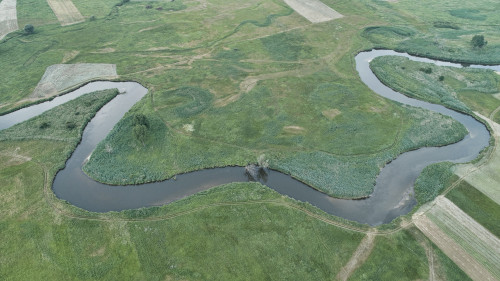
The beauty of Ponidzie fascinates both the residents and tourists. The Nida River, with its meanders and vicinal meadows, encourages the admiration of the beauty of nature while cycling, hiking or canoeing. We can hear the unforgettable sound of cicadas here. There are nature reserves with remarkable swamp and steppe plants. One of the most interesting plant species is the dittany.
Besides the charming landscape, there are numerous places associated with historical events in Ponidzie. Archaeological discoveries have confirmed that Celtic and Germanic settlements were located in the vicinity of Pełczyska.
Pińczów, a town called the „Polish Athens”, also fascinates with traces of history. It was a centre of the Reformation and humanism in this region. We can admire the Wielopolski Palace dating back to seventeenth-century and the synagogue. The Chapel of Saint Anne, located out-of-town, is the most representative building of Pińczów.
Build up your health and energy
(The Busko-Zdrój region)
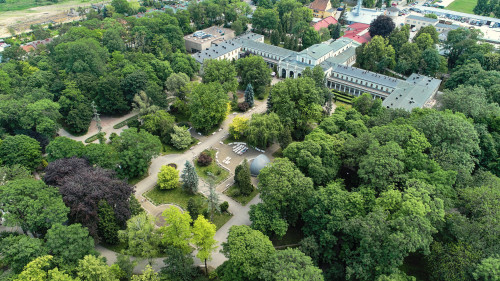
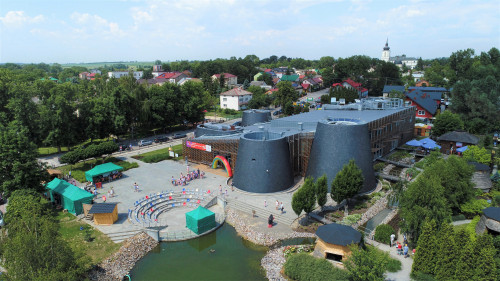
It is worth visiting Busko-Zdrój and Solec-Zdrój to boost your health, physical condition and wellbeing. Patients suffering from rheumatism, orthopaedic, cardiological, neurological, and dermatological illnesses are treated here.
The guests coming to the Busko-Zdrój Health Resorts can take advantage of about 80 kinds of treatment. The mineral and thermal pools in Solec-Zdrój are intended not only for people who need treatment but for everybody who likes to spend time in an active way. There is also the possibility of participation in cultural events attracting internationally renowned stars. The Krystyna Jamroz Music Festival, the Summer with Chopin, and the International Folk Festival are organised every year.
In Wiślica, there are the reminiscences of the creation of the Polish state. For many years, it was considered to be the capital of the powerful Vistulan state. The settlement dates back to the tenth century. A century before the formal Christianisation of Poland, the inhabitants were baptised here by Saint Methodius. The baptismal font and visible reminiscences of the old fort are the most valuable relics of this period.
The collegiate church under the invocation of the Nativity of the Blessed Virgin Mary overlooks the town. It was built in the second half of 14th century. Under the church, the reminiscences of two former Romanesque churches were discovered. There is also the Romanesque floor with the picture of praying figures – probably Duke Kazimierz Sprawiedliwy with his family. The Długosz House in Wiślica and the bell tower were funded by a famous Polish historian.
The European Fairy Tale Centre in Pacanów is the most amazing place for children. It is associated with Koziołek Matołek, a famous hero of children’s literature. The place provides a lot of fun linked with learning. Children can take part in young culture festivals, attractive contests or comic book meetings.
Archaeological discoveries and thermal water
(The Kazimierza Wielka region)
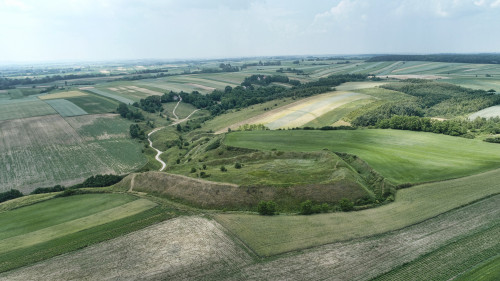
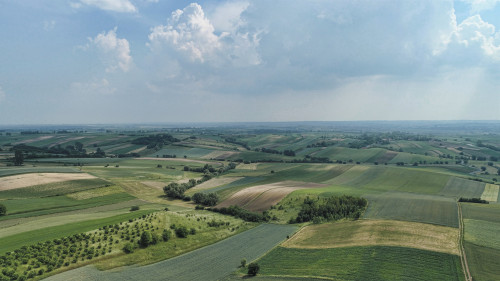
The Kazimierza Wielka area is a typical farming region due to the fertile loess soil. Cereal growing, vegetable cultivation and forage crop cultivation are the most common kinds of culture here. There are also ecological farms in this area.
Moreover, it is known that since the 1960s, deposits of thermal and sulphur water, situated in the neighbourhood of Cudzynowice, have been a local treasure. This water, which contains iodine and sulphur compounds, can be utilized both in therapeutics and cosmetology. It is also a potential source of geothermal energy that can replace the traditional way of heating public buildings. The presence of water rich in minerals was confirmed by boreholes and research. Unique thermal pools, which will be available for visitors all year round, are planned to be built using the hot mineral springs around Kazimierza.
Kazimierza Wielka region is also known for being an area of numerous archaeological discoveries and scientific studies. The most interesting examples of the settlement history in Świętokrzyskie include the boulder burials discovered in Słonowice, dating back to the turn of the third and fourth millennium BC, and reminiscences of the Vistulan tribe fort in Stradów dating back to the tenth century AD, thought to be the largest hillfort in southern Poland at the time.
A spirit of chivalry and Camaldolese principles
(The Staszów region)
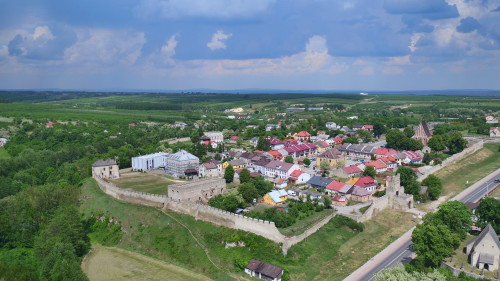
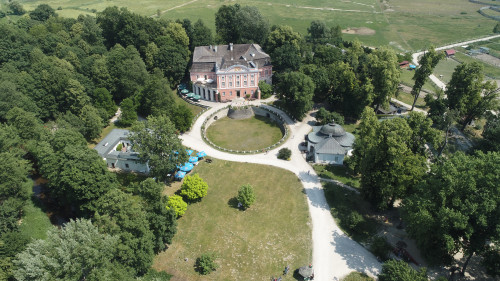
Visiting Szydłów we can feel the medieval spirit of the age of chivalry. The town, called the “Polish Carcassone”, amazes visitors with its fortified walls and a piece of a fosse that is still visible.
According to legend, the name of Szydłów is derived from a ruffian’s name. He was called Szydło and was known for the robbing of rich merchants passing through this way. This defensive town was extended and bolstered by King Kazimierz Wielki. Here we can visit the broad courtyard, the palace, the castle gate, the treasury and one of the oldest Polish synagogues.
History is linked with contemporary times in Kurozwęki. The old private town was established probably in the 13th century. Visitors are still attracted by the palace and park complex, where the music of Fryderyk Chopin sounds in the scorching afternoons.
However, it is attractive not only for music lovers. The splendid palace was remodelled several times. King Stanisław August Poniatowski stayed here. Nowadays, we can admire not only the architectural monument but we can encounter nature here. The guests can watch bison that are bred in Kurozwęki, visit the small zoo and the stables. They can also rove around a great sweetcorn maze. Every year, it takes the shape of a different catchword and literary, historical or contemporary figures e.g. Tadeusz Kościuszko, Saint James, Jan Paweł II (Pope John Paul II), Henryk Sienkiewicz and Koziołek Matołek.
Guests staying in Rytwiany can enjoy the silence, relaxation, reflection, and relief. There is the only Camaldolese monastery in Poland, open to everybody. People come here to slow down and clear their mind undergoing the Camaldolese principles of calmness and contemplation. Despite the place being rather solitary, it is known for being the setting of the television series “Czarne chmury”. Important scenes were shot here when a Polish nobleman Krzysztof Dowgird was rescued by his trusty wachtmeister, Kacper Pilch. The film’s heros were helped by monks so their white habits and their motto “memento mori” became the signs associated with the Rytwiaty hermitage…
“Little Rome” in Świętokrzyskie
(The Sandomierz region)
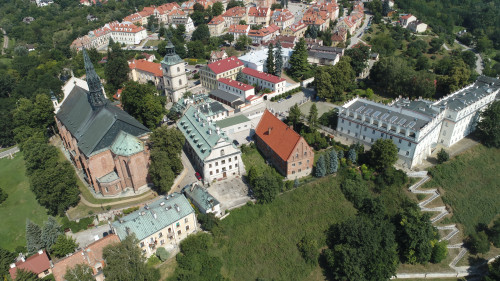
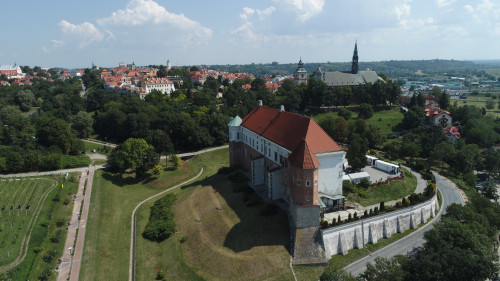
Going along the Vistula River we reach Sandomierz, called the gem of the Świętokrzyski region. It is one of the oldest and most historically meaningful cities in Poland, mentioned in Gall Anonim’s chronicle. Its nickname is Little Rome because of its location on seven hills. Sandomierz was regarded as one of three the most important gords in the country. The town survived the Tatar and Lithuanian invasions, then the Swedish Deluge.
We can visit numerous monuments here. The castle, built under the reign of King Kazimierz Wielki, stands in the vicinity of the Vistula River. Nowadays, the castle is the residence of the regional museum. The way passes from the castle through the historic buildings of the Old Town, surrounded by a city wall, with the beautiful Town Hall, Collegium Gostomianum, the old high school erected by the Jesuit order, the Długosz House, the cathedral, the historic churches and the Opatów Gate, from which a wonderful view of the city and its surrounding can be admired.
The unusual treasures of Sandomierz are also hidden underground where a tourist trail has been specially adapted for sightseeing. In the past, wine and goods were held by merchants and winery owners here. Moreover, the cellars and underground corridors were used as a shelter for the citizens during the Tatar invasions.
Sandomierz region invites not only the enthusiasts of history and monuments; it is a real heaven for wine lovers, because the tradition of wine-making has been revived here. It is also worth taking part in the Vistula river cruise to see the skyline of the city and its surrounding area. In this way we can admire a local peculiarity of nature. The Pieprzowe Mountains is a phenomenon unique in Europe, consisting of 500-million-year old Cambrian rocks. There are numerous species of steppe flora found here. The natural rosarium also occurs here – the only of its kind in Europe.
The horses had marble mangers…
(The Opatów region)
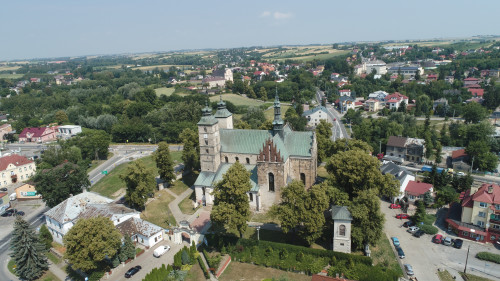
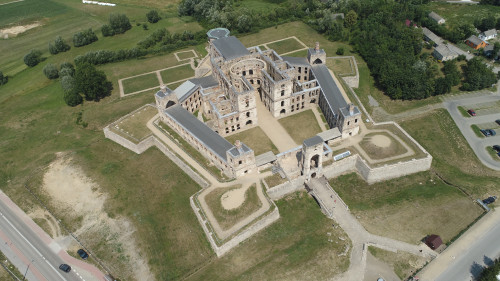
It is worth visiting Opatów, situated near Sandomierz. This town, formerly called Żmigród, was an important point of the medieval trade routes linking the Black Sea, Hungary, Ruthenia and Northern Europe. According to the chronicler, Jan Długosz, the first Polish property of the Templars’ Order was established in Opatów by Duke Henryk Sandomierski. It can be seen in the Opatów coat of arms, in which the letter “T” is an important element. “T” is a first letter of the name of the Templars’ Order.
The monuments of Opatów are impressive and mysterious, including Saint Martin’s Collegiate, the Warsaw Gate with the remnants of the defensive wall, the town hall, the Bernardine Monastery, and an underground route running under the market square.
When exploring the most interesting places of the Świętokrzyskie region it is impossible to overlook Krzyżtopór Castle. A monumental structure called the “palazzo in fortezza” is an example of the seventeenth-century constructors’ solution combining an elegance of residence, owned by the mighty Ossoliński gens, with a defence direction. The name of the castle is related to a cross (Polish: krzyż) – – the Christian religious symbol, and an axe (Polish: topór) – the owner’s family’s coat of arms. The castle was modelled on the idea of a calendar. The palace had 365 windows – a number corresponding to the number of days in a year; 52 chambers – corresponding to the number of weeks; 12 ballrooms that were dedicated to different months; 4 towers that represented the 4 seasons. The guests admired the luxury of this stately castle. The horses in the stables had marble mangers and could see themselves in crystal mirrors. The ceiling in one of the ballrooms was an aquarium, in which there were exotic fish. Nowadays, the ruins of Krzyżtopór castle come alive during the numerous knightly tournaments which take place there.
A prehistoric world of dinosaurs
(The Ostrowiec Świętokrzyski region)
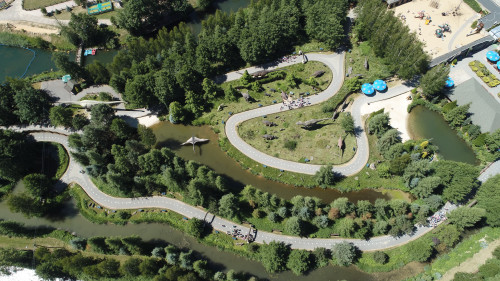
The journey through the Świętokrzyskie region continues following the valley of the Kamienna river. We reach the Neolithic flint mines in Krzemionki. It is a unique place, in which striped flint was exploited and processed 5 thousand years B. C. The blades of axes and chisels were made of flint at that time. These days, there is a preserve there, including mine corridors, shafts, mine tips, and a Neolithic settlement that is a reconstruction of that of the Stone Age and the early Bronze Age. The prehistoric world is also available for tourists in the Bałtów Jurassic Park. According to the legends told by the local residents, the devil impressed his footprint on a rock in the river valley. It led scientists to discover the tracks of three species of dinosaurs. Nowadays tourists can admire the reconstructed forms of primeval animals in their natural sizes. In Bałtów, a world of extinct creatures coexists with the present fauna. Many species of animals from far away continents live in the Bałtów preserve called Zwierzyniec. There are mouflons, llamas, camels, boar, exotic sheep and goats, antelopes, ostriches etc. Young and elderly guests, who yearn for thrills, can visit the Witch Village, the Land of Horses, the amusement park, and – in winter – the Santa Claus Village. Skiers can enjoy the Bałtów ski slope called the “Bałtów Switzerland” during the season.
Ostrowiec Świętokrzyski is related to the living history of the development of the Central Industrial District in southern Poland during the interwar period in 20th century. The Ostrowiec steel mill and the Ostrowiec plants dynamically operated at that time. It has been given a new lease of life with the revitalization of the town by the restoration to its former splendour by the use of post-industrial buldings. They can be used as cultural centres, metallurgy tradition centres or a meeting place for inhabitants.
A great industry tradition
(The Starachowice and Skarżysko Kamienna regions)
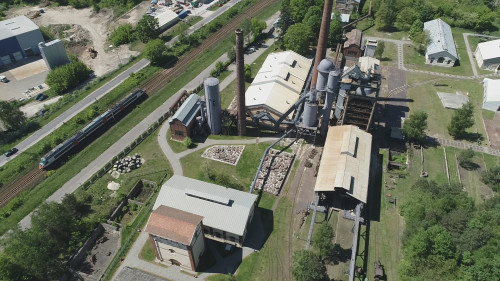
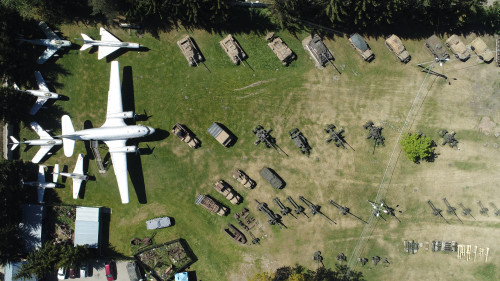
Wąchock is associated with the Cistercian tradition. The monks were brought there at the beginning of 12th century. They contributed to the development of agriculture, established stone workshops, looms, quarries and metallurgical furnaces. However, the history of this land is much older dating back to the Paleolithic and the Mesolithic. In the archaeological preserve in Rydno traces of human activity from 18 000 years ago have been found together with reindeer hunters from 11 000 years ago, and people who exploited haematite – a mineral used to create a red dye.
Starachowice has a great industrial tradition including Old Polish forges. The history of the town, which dates back to the 12th century, is closely related to metal processing, metallurgy and the development of the Central Industrial District. Nineteenth-century objects are exhibited in the Muzeum of Nature and Technology in Starachowice where the last of the blast furnace workshops are preserved, including the production hall and the engine room. The newer exhibits are also interesting, e. g. popular trucks called „Star” that were produced in Starachowice. Military enthusiasts will be fascinated with the Muzeum Orła Białego (The Museum of the White Eagle) in Skarżysko-Kamienna. There we can see documents and exhibits relating to the activity of the partisan units during the Second World War together with Polish Army equipment used during the war and after 1945.
For cyclists and swimmers
(The Końskie region)
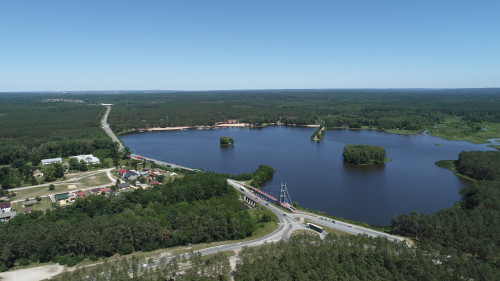
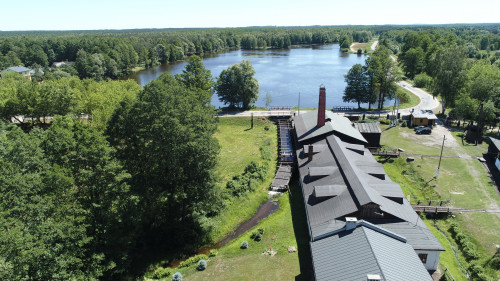
When travelling through the Świętokrzyskie region, it is worth stopping to rest in the Końskie area. We can admire the forest landscape along the Czarna River and its creeks. There are interesting cycle routes and reservoirs such as in Sielpia. Exceptional rock formations are worth seeing, especially in the Piekło Reserve near Niekłań. These Triassic and Jurassic rocks took the form of mushrooms, pulpits and chimneys. What is interesting, near to the settlement called Piekło (Hell), there is also Niebo (Heaven).
The Końskie region is also associated with the tradition of heavy industry. Ancient metallurgical plants in Maleniec, Sielpia and Stara Kuźnica are the relics of the time.
A paradise for nature lovers
(The Włoszczowa region)
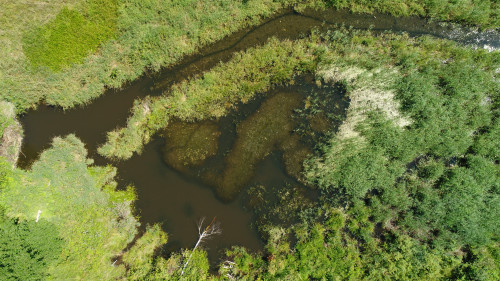
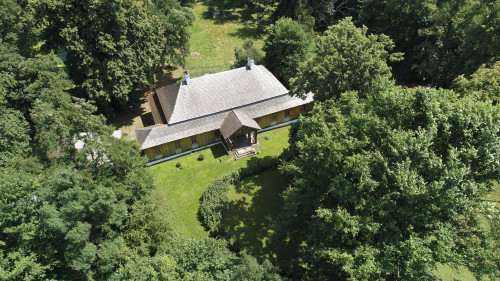
The Włoszczowa region is a rural and industrial area but there is also a large spread of forest so the place has a high ecological value. There are oak-hornbeam forests, mixed woodland and in the river valleys – riparian and alder forests. Thick willow bushes grow along the meandering rivers. In places it changes into watery meadows, marshes and peatbogs.
The area is settled by thousands of birds so it is a real paradise for ornithologists and nature lovers who like birdwatching.
One of the most interesting places close to Włoszczowa is Czarnca where hetman Stefan Czarniecki was born and buried. Ludynia is also an unusual locality with its wonderful landscape, inimitable charm of close ponds. In the old lime-tree park a beautiful manor house is located. This unique building became a favourite object for filmmakers. It was employed as a film set in such Polish films as “Przedwiośnie” and “Syzyfowe prace”.
Time has stopped…
(The Jędrzejów region)
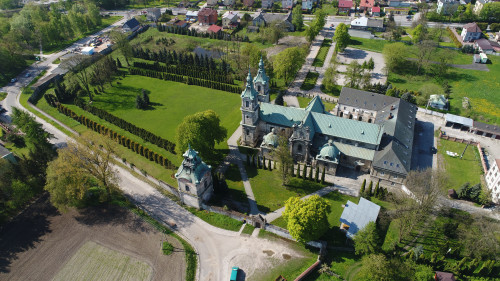
The oldest Cistercian monastery in Poland is located in Jędrzejów. It is one of the most important and most willingly visited relics. The monastic brothers, who came there in the 13th century, had a great impact on the growth of the locality. They supported the establishment of smelters, glasshouses, the development of metallurgy, agriculture and animal farming. The hospital and hospice were also instituted by the Cistercians. The medieval author of the first Polish chronicle, Wincenty Kadłubek, lived and acted there, so there is a chapel dedicated to him.
It is hard to overlook Nagłowice, a place where Mikołaj Rej lived and wrote. He was a remarkable Renaissance poet. There is a museum in his manor house where copies of his manuscripts are on show.
It seems like time has stopped in the Museum of Clocks. The collection of chronometers, mechanical watches, astronomic devices, and old prints are displayed there. A part of this collection is shown in the so-called garden of time.
The oldest mountains in Poland
(The Kielce region)
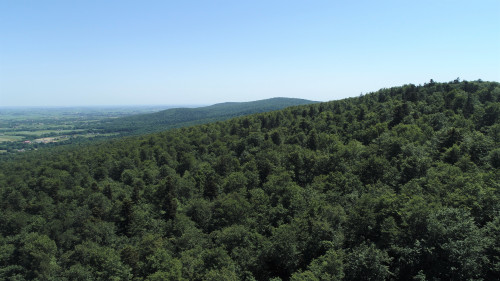
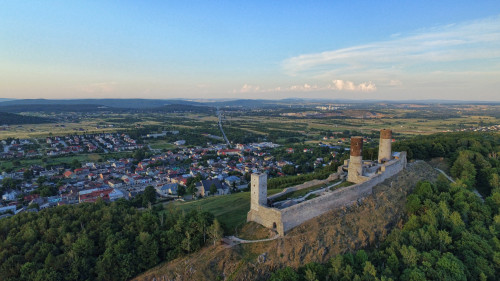
The Świętokrzyskie Mountains, located at the heart of the region, are the oldest mountains in Poland. A million years ago the sea was there. The past left its traces in rocks in the form of coral, trilobites, and fish fossils. In the distant past the Świętokrzyskie Mountains were alternately flooded with sea water and uplifted. Currently, the Świętokrzyskie Mountains include steep slopes covered with fir forests, beautiful valleys, and representative boulder fields which remain after past glaciations. The most important part of the mountain range, called Łysogóry, includes Łysica and Łysiec. There is a Benedictine monastery at the top. Relics of the Holy Cross are kept there. While visiting the Świętokrzyski National Park we can admire outstanding natural features. History and geology can be discovered in the Raj (Paradise) Cave, in Nowa Słupia during the events called Dymarki Świętokrzyskie, in the Świętokrzyskie Settlement beside the Holly Cross monastery and in the castle in Chęciny. The tradition of the region, representative old village development, and the heritage of the local folklore – are presented in the Museum of the Kielce Village, in the Ethnographic Park in Tokarnia. The history of the local Jewish community is presented in a museum called Świętokrzyski Shtetl in Chmielnik. The Kielce region is also known for the famous writers who lived there. These include Stefan Żeromski, Henryk Sienkiewicz and Gustaw Herling-Grudziński. There are wonderful conditions for leisure there. We can also enjoy numerous walking and bike trails or ski slopes in the winter.
For lovers of geology and history
(The City of Kielce)
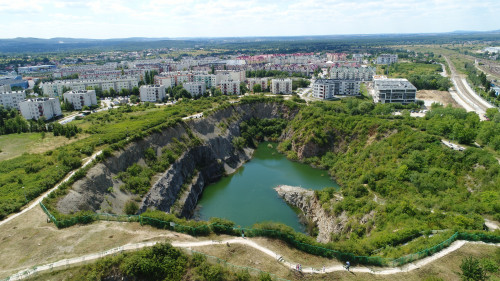
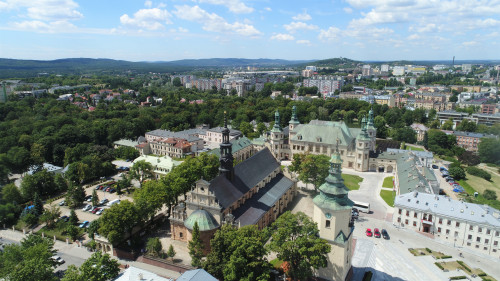
Kielce is the capital of the Świętokrzyskie voivodship. It is situated at the heart of the region. There are five geological reserves in the city so it is a paradise for lovers of geology. They can discover some interesting facts of the earth’s history, natural and landscape values.
The Former Palace of the Cracow Bishops overlooks the city. The 17th-century building is the residence of the National Museum in Kielce with a beautiful Italian garden. In the city centre, we can also admire the cathedral basilica and the 11th-century church of St. Wojciech. Kielce is the cultural centre of the region where numerous interesting festivals, international exhibitions, musical, theatrical, and sport events take place. The capital of the region is also an important exhibition centre that organises trade expositions. These events are visited by investors and businessmen from different parts of the world.



